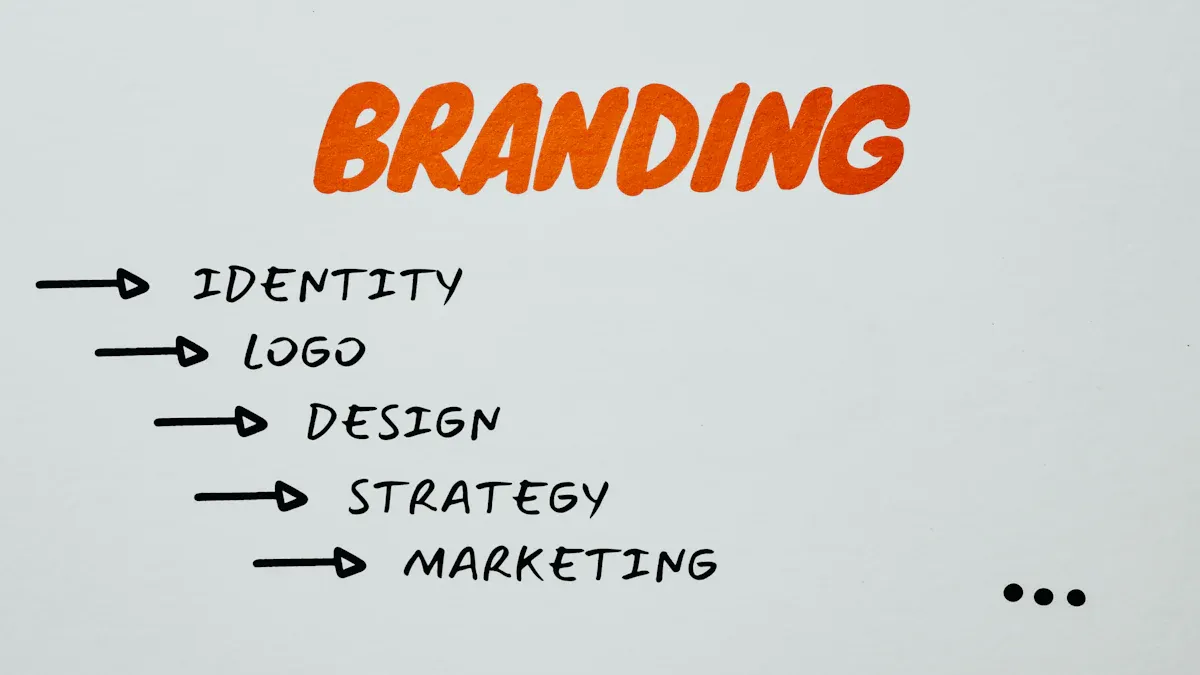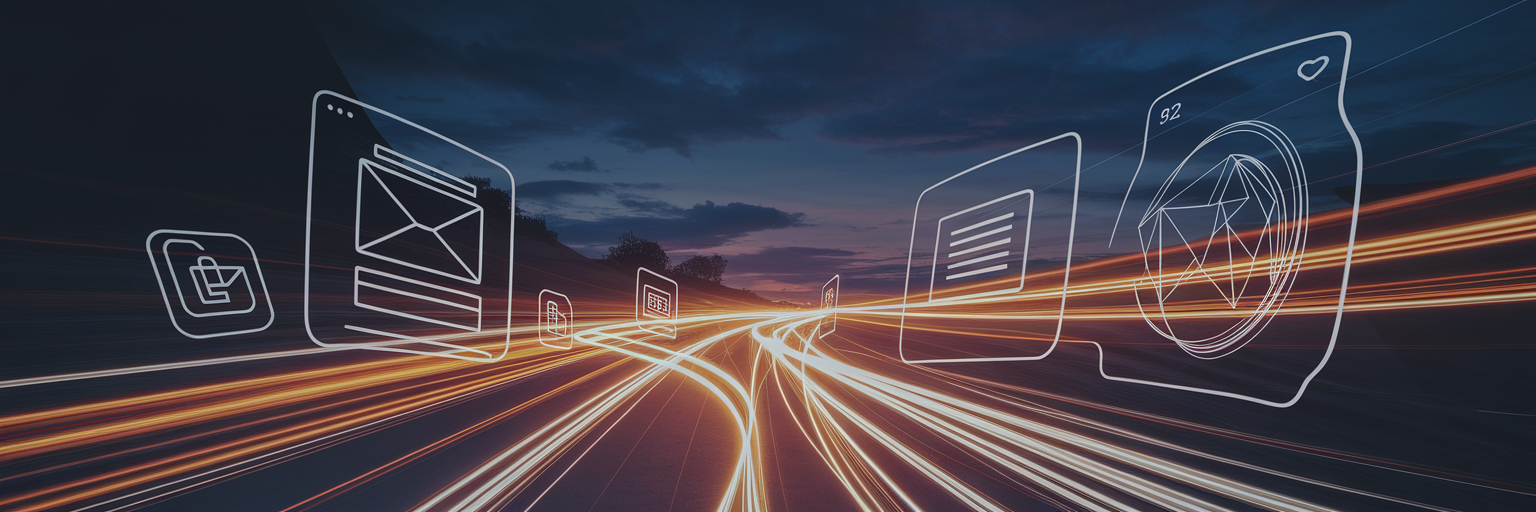
Startup Strategies for Designing Lasting Brand Loyalty
Table Of Contents
In a marketplace teeming with new ventures, a startup’s ability to forge a genuine connection with its early adopters often dictates its trajectory. It’s a common understanding that many startups falter not due to a lack of innovation, but from an inability to resonate deeply enough to build a sustainable user base. This is where design transcends mere aesthetics, becoming a fundamental instrument of influence and connection.
The Foundation of Persuasive Design for Startups
The survival of a new business in a crowded field often comes down to how well it connects with its first users. It’s easy to think of design as just making things look good, but it’s far more potent; it’s a strategic tool for influence. Persuasive design, at its heart, is about ethically guiding users toward actions and decisions that are beneficial for both them and the business. It’s not about trickery or manipulation. Instead, it focuses on creating genuine connections by deeply understanding user needs, motivations, and the subtle cues of design psychology in branding. Think of it as a thoughtful conversation, where the design anticipates what the user wants and gently leads them there.
For startups, this approach is particularly crucial. New companies often operate with tight marketing budgets and little to no existing brand recognition. Persuasive design offers a powerful, cost-effective way to stand out, capture initial attention, and begin cultivating a loyal customer base from day one. This directly impacts startup customer retention, turning first-time users into long-term advocates. When a startup like LaunchBox emphasizes creating amazing brands, it’s rooted in understanding these foundational principles of connection and guidance. For those just beginning, understanding how to launch a brand effectively is the first step in this journey.
The link between thoughtful design choices and brand loyalty is direct and undeniable. Elements such as an intuitive interface, clear communication of the product’s value, and branding that resonates emotionally all contribute to building trust and user satisfaction. When users feel understood and valued by the design, they are more likely to stick around. This isn’t just about a single transaction; it’s about laying the groundwork for enduring allegiance. Persuasive design, therefore, isn’t merely a tactic but a strategic imperative for startups, enabling them to forge meaningful customer relationships from their very inception.
Psychological Principles Powering Persuasive Design
Moving beyond the ‘what’ and ‘why’ of persuasive design, it’s essential to understand the psychological drivers that make it so effective. The most successful persuasive design startups employ is not accidental; it’s deeply rooted in an understanding of fundamental human behaviors. Insights from cognitive psychology, often discussed in UX research circles, confirm that principles like reciprocity and social proof significantly influence user decisions and brand perception. These principles, when ethically applied, can transform a simple interaction into a meaningful connection. Key principles include:
- The Principle of Reciprocity
- Social Proof and Community Building
- Scarcity, Exclusivity, and Urgency
- Authority and Trust Signals
The Principle of Reciprocity
This principle is straightforward: when you give something of value, people feel a natural inclination to give something back. For a startup, this could mean offering a genuinely useful free tool, insightful content, or proactive support prompts within an app. A user who receives unexpected value upfront is more likely to feel appreciated, engage more deeply with the product, or even become a paying customer. It’s about initiating a positive exchange that fosters goodwill.
Social Proof and Community Building
Humans are social creatures, often looking to others for cues on how to behave or what to choose. As Cialdini noted in Influence: The Psychology of Persuasion, when we’re indecisive we often look to the behavior of the group.
Founders can leverage cues by integrating elements like authentic user testimonials, real case studies, visible review scores, or even subtle indicators of community activity (e.g., “200 people are currently using this feature”). These signals build credibility and reassure new users that they are making a sound choice, fostering a sense of belonging and shared experience.
Scarcity, Exclusivity, and Urgency
We are terrified of scarcity. The idea of not having something that we might need is far more motivating than the idea of getting something we want. The negative outweights the positive every time.
Design can effectively communicate limited-time offers, early access for loyal users, or special benefits for members. When used ethically, these tactics can enhance perceived value and prompt timely action. For instance, “Only 3 spots left for our beta program” can encourage sign-ups. However, it’s crucial to distinguish between genuine value-driven urgency and manipulative pressure. Creating artificial scarcity can quickly erode trust, a topic LaunchBox explores in depth when discussing Behavior Design vs Dark Patterns. The goal is to make users feel they are getting a special opportunity, not being pressured.
Authority and Trust Signals
A professional, polished design aesthetic immediately conveys a sense of competence. Beyond looks, transparent communication—such as easily accessible privacy policies, clear terms of service, and straightforward pricing—builds confidence.
Displaying relevant security badges, certifications, or even logos of reputable partners can further enhance perceived expertise and trustworthiness. These signals assure users that the startup is credible and reliable. Applying these psychological triggers thoughtfully helps startups create experiences that resonate deeply, encouraging not just initial adoption but sustained engagement and loyalty.
Core Persuasive Design Elements for Startups
With an understanding of the psychological underpinnings, we can now explore the tangible design components that startups must prioritize. This is where theory translates into practice, turning psychological principles into elements that users see, interact with, and feel. Crafting these core components thoughtfully is essential to build brand loyalty design from the ground up.
Compelling Visual Identity System
A startup’s visual identity is its handshake with the world. It’s often the first point of contact and plays a huge role in recognition and emotional connection. This isn’t just about looking pretty; it’s about strategic communication. Key components include:
- Unique and memorable logo: This is the cornerstone of brand recognition.
- Consistent and psychologically appropriate color palette: Colors evoke emotions and can reinforce brand values (e.g., blue for trust, green for growth).
- Legible, brand-aligned typography: Fonts convey personality and ensure readability.
A cohesive visual system ensures that every interaction reinforces the brand’s identity and message.
Intuitive User Experience (UX) and User Interface (UI) Design
Nothing kills enthusiasm faster than a clunky, confusing product. A seamless user journey is paramount for retaining users. If people can’t easily figure out how to use your product or find what they need, they’ll simply go elsewhere. This directly impacts user experience loyalty. Key considerations are:
- Logical information architecture: Organizing content in a way that makes sense to users.
- Clear navigation: Helping users find their way around effortlessly.
- Uncluttered interfaces: Avoiding overwhelming users with too much information or too many options.
- Responsive design: Ensuring a consistent and usable experience across all devices.
Startups can find valuable guidance on creating effective digital experiences by exploring resources on website design principles.
Personalization and Tailored Experiences
In a world saturated with generic messages, personalization makes users feel seen and understood. Design can facilitate adaptive experiences that cater to individual needs and preferences. This might involve:
- Personalized recommendations: Suggesting content, products, or features based on past behavior.
- Customizable dashboards: Allowing users to arrange information in a way that’s most relevant to them.
- Relevant notifications: Providing timely and context-specific updates.
When a product adapts to the user, it fosters a stronger sense of connection and value.
Storytelling Through Visuals and Microcopy
Every design choice, from grand visuals to tiny bits of text, contributes to the brand’s narrative. Effective storytelling creates an emotional connection that goes beyond functional benefits. This includes:
- Brand-aligned imagery and illustrations: Visuals that reflect the brand’s personality and values.
- Purposeful iconography: Icons that are both intuitive and aesthetically consistent.
- Empathetic and clear microcopy: The small pieces of text (button labels, error messages, tooltips) that guide and reassure users. Even an error message can be an opportunity to reinforce brand voice and helpfulness.
These elements work together to communicate the startup’s mission and values, fostering a shared identity with users.
| Design Element | Key Characteristics | Impact on Brand Loyalty | Example for Startups |
|---|---|---|---|
| Visual Identity System | Memorable logo, consistent colors & typography, reflects brand personality. | Builds recognition, conveys values, creates emotional anchor. | A fintech startup using calming blues and greens to convey trust and stability. |
| Intuitive UX/UI Design | Clear navigation, logical flow, uncluttered interface, responsive across devices. | Reduces friction, increases satisfaction, encourages repeat use. | An e-learning platform with a simple onboarding process and easily searchable content. |
| Personalization | Content recommendations, tailored notifications, customizable interfaces. | Makes users feel understood and valued, strengthens bond. | A meal-kit service suggesting recipes based on past orders and dietary preferences. |
| Storytelling (Visuals & Microcopy) | Brand-aligned imagery, purposeful iconography, empathetic and clear microcopy. | Creates emotional connection, communicates mission, fosters shared identity. | A sustainable product startup using earthy tones and copy that highlights ethical sourcing. |
This table outlines core design elements and illustrates how their thoughtful implementation can directly foster brand loyalty by addressing specific user needs and emotions. The examples are illustrative of how startups can apply these concepts.
These design elements are not isolated efforts but interconnected building blocks. When thoughtfully integrated, they create persuasive experiences that not only attract users but also encourage them to stay and become loyal advocates.
Applying Persuasive Design Across Customer Touchpoints
Having established the core elements of persuasive design, the next step is ensuring their consistent application wherever a customer interacts with your brand. A disjointed experience can quickly undermine even the most brilliant individual design components. The goal is to create a cohesive and reinforcing brand narrative across all channels, making every interaction an opportunity to strengthen loyalty.
Website and Mobile App Design
For most startups, their website or mobile app is the primary stage for customer interaction. These platforms must embody persuasive principles from the very first click. Key considerations include:
- Clear value proposition on homepage/landing page: Users should immediately understand what you offer and why it matters to them.
- Frictionless onboarding flow: Guiding new users smoothly into the product experience.
- Persuasive calls-to-action (CTAs): Clearly indicating desired next steps in a compelling way.
- Mobile responsiveness: Ensuring a seamless experience regardless of device.
Avoiding common pitfalls is crucial; many businesses stumble by making easily avoidable errors. Understanding the top 7 website design mistakes small businesses make can help startups sidestep these issues.
Email Marketing and Communications
Email remains a powerful tool for nurturing customer relationships. The design of your emails—layout, visuals, typography—significantly impacts readability and engagement. Consistent branding in email signatures, headers, and footers reinforces your identity and builds trust. Persuasive design here means crafting emails that are not only informative but also visually appealing and easy to digest, encouraging opens and clicks rather than immediate deletions.
Social Media Visual Strategy
Social media platforms are highly visual environments. A startup’s presence here needs a cohesive and engaging visual strategy that showcases brand personality and reinforces its narrative. This isn’t just about posting pretty pictures; it’s about platform-appropriate design that captures attention and encourages interaction. Whether it’s Instagram, LinkedIn, or X (formerly Twitter), the visual language should be instantly recognizable as yours. LaunchBox offers further insights on leveraging social media marketing with design to build a compelling presence.
Tangible Brand Interactions
Persuasive design isn’t limited to digital spaces. For startups with physical products, packaging design offers a prime opportunity to create a memorable unboxing experience, turning a simple delivery into a delightful moment. For service-based startups, the design of proposals, reports, or even invoices can reflect brand quality and attention to detail. Every tangible touchpoint is a chance to make a positive impression and reinforce the brand’s value, making every interaction count towards building lasting loyalty. This consistency across diverse channels is what transforms sporadic interactions into a compelling, unified brand experience that fosters deep customer allegiance.
Gauging the Success of Persuasive Design for Loyalty
Implementing persuasive design strategies is a significant step, but how do startups know if these efforts are truly fostering loyalty and improving startup customer retention? The final, crucial piece of the puzzle is measurement and iterative improvement. Without tracking impact, design decisions remain based on assumptions rather than evidence. This section focuses on how to evaluate the effectiveness of your design choices and refine them over time.
Identifying Key Loyalty Metrics
To understand if your design is working, you need to track specific, quantifiable indicators of customer loyalty. These metrics provide concrete data on user behavior and sentiment:
- Customer Retention Rate: The percentage of customers who continue to use your product or service over a specific period.
- Repeat Purchase Frequency: How often customers return to make another purchase.
- Net Promoter Score (NPS): A measure of customer satisfaction and willingness to recommend your brand.
- Customer Lifetime Value (CLV): The total revenue a business can reasonably expect from a single customer account.
- Engagement rates with specific design features: Tracking how users interact with key elements you’ve designed to be persuasive.
Tools and Methods for Measurement
Several tools and methods can help startups gather data on these metrics and understand user interaction with their designs:
- A/B testing: Comparing different versions of a design element (e.g., button color, layout, copy) to see which performs better.
- User surveys and feedback forms: Directly asking users about their experience and satisfaction.
- Web/app analytics platforms: Tools like Google Analytics provide data on user behavior, traffic sources, and conversion rates.
The Importance of Iterative Improvement
Persuasive design is not a one-time project; it’s an ongoing process of learning and refinement. Startups must be prepared to analyze the data collected and use those insights to make informed adjustments. What resonates with users today might need tweaking tomorrow as market conditions or user expectations evolve. Using a structured approach, such as a design review checklist, can be invaluable in this iterative process, ensuring that refinements are systematic and purposeful.
Valuing Qualitative Insights
While quantitative metrics tell you *what* is happening, qualitative insights reveal the *why*. Feedback gathered from user interviews, usability testing sessions, and open-ended survey responses provides rich, contextual understanding of user perceptions and pain points. These narratives can uncover subtle issues or highlight unexpected successes that numbers alone might miss. Systematically measuring impact and committing to iterative refinement are crucial for ensuring that persuasive design efforts continue to drive growth and build the lasting brand loyalty that startups need to thrive.










